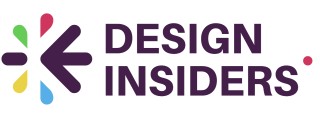
The Importance of E-Reputation in Design
The Impact of Online Reputation in the Design Industry
In today's digitally connected world, an organization's reputation online holds immense power, especially within the design industry. A compelling online presence can captivate audiences and drive growth. Conversely, negative exposure can lead to challenges, impacting an enterprise's credibility and success.
Design firms must understand that maintaining a positive image sur internet est crucial. Clients and stakeholders often rely on les avis and reputation indicators found on reseaux sociaux and online platforms to make informed decisions. Hence, a robust gestion reputation strategy becomes indispensable.
Les entreprises in this domain face unique challenges as their work is often subject to public interpretation and critique. Successful online reputation management involves not just defending against potential detractors but also fostering a positive narrative that resonates dans les clients' minds.
By effectively leveraging des informations collected from les reseaux, design companies can not only address issues promptly but also anticipate les problemes that may arise in the future. Putting a proactive strategy in place can assist in managing reputation and, ultimately, result in a stronger market position.
Challenges in Managing E-Reputation for Design Firms
Understanding the Complexities of Online Reputation Management
In the design industry, managing an online reputation is not just about maintaining a positive image; it's a complex task that involves navigating various challenges. Design firms must be vigilant in their storytelling strategies to captivate and convert audiences, as the digital landscape is ever-evolving.
Dealing with Negative Feedback
One of the primary challenges is handling negative feedback. Les avis sur internet can spread rapidly, affecting the perception of une entreprise. It's crucial for design firms to have a robust strategy in place for addressing des avis that could potentially harm leur reputation. This requires not just quick responses, but thoughtful ones that show empathy and a willingness to resolve issues.
Navigating Social Media Dynamics
Les reseaux sociaux are both a boon and a bane for reputation management. While they offer a platform for engagement, they also present the risk of rapid dissemination of negative information. Une veille constante sur les reseaux sociaux is essential to keep track of what is being said about the company. However, the sheer volume of data can be overwhelming, making it difficult to filter out the noise and focus on the critical issues.
Balancing Transparency and Privacy
Another significant challenge is balancing transparency with privacy. Clients expect transparency dans les communications, yet there is a fine line between being open and oversharing. Design firms must carefully consider what information to share, ensuring it aligns with their brand values without compromising client confidentiality or internal operations.
Consistency Across Platforms
Ensuring consistency across different platforms is also a hurdle. Une entreprise est often present on multiple channels, and maintaining a coherent message across all of them is vital for effective reputation management. Inconsistencies can confuse clients and dilute the brand's message, leading to potential trust issues.
Addressing these challenges requires a comprehensive approach that includes strategic planning, active engagement, and the use of appropriate tools, as will be discussed further in the following sections.
Strategies for Building a Strong Online Presence
Building a Robust Online Footprint
In today's digital age, the online reputation of design firms is not just significant; it's a vital component of their success. To effectively manage their online presence, design firms must build a strong foundation that will withstand the scrutiny of potential clients and partners. Here are some strategies to enhance the online reputation of your design business.Establish a Consistent Brand Identity
Creating a consistent brand identity across all digital channels is crucial for building trust and recognition. Your brand should convey the values and aesthetics that set your firm apart from competitors. Ensure that your website, social media profiles, and any online listings reflect your brand’s unique character.Optimize Content for Digital Platforms
Content plays a significant role in shaping public perception. Publish engaging and informative content that showcases your expertise in design. This includes case studies, blogs, and portfolio pieces that highlight your successes. For instance, understanding the psychology of colors can offer intriguing insights into your design capabilities.Leverage Social Media to Connect
Social media is an influential tool for connecting with audiences and building reputation. Regularly posting updates, engaging with followers, and participating in design communities can help foster a positive image. However, inconsistency or negative interactions can harm your online reputation. Hence, maintaining a strategic presence on platforms like LinkedIn, Instagram, and Pinterest is essential.Cultivate Customer Relationships
Strong client relationships can significantly boost your reputation. Encourage satisfied clients to leave positive reviews, as these can influence potential customers' decisions more than any other form of advertising. Respond to feedback—both positive and negative—promptly and professionally to demonstrate accountability and customer care. By actively managing these aspects, design firms can build and maintain a fortress-like online reputation that withstands scrutiny and fosters growth.Tools and Platforms for Monitoring E-Reputation
Essential Tools and Platforms
When it comes to monitoring e-reputation, it's critical for design firms to be proactive. Utilizing the right tools and platforms can help companies effectively manage their online reputation and address any potential issues as they arise.Integrating Reputation Management Tools
- Social Media Management Tools: Reseaux sociaux play a pivotal role in shaping an enterprise's online persona. Employing social media management tools can provide businesses with a valuable insight into their standing on platforms like Twitter, Facebook, and Instagram. These tools help track mentions, comments, and direct messages which can be instrumental in the gestion reputation.
- Review Monitoring Platforms: Monitoring des avis from clients through platforms like Yelp or Google Reviews is essential for une entreprise. These tools compile customer feedback and offer analytics features that allow une veille sur internet to decipher sentiment trends and address any problems promptly.
- SEO and Analytics Tools: Search engine visibility is integral for any business's online reputation. Tools like Google Analytics and other SEO platforms assist companies in understanding the les resultats. This data offers guidance on how to improve their digital presence and visibility.
Harnessing the Power of Automation
Automation can also be a significant advantage pour une entreprise looking to stay ahead of the curve in e-reputation management. Businesses can set up automated alerts that notify them about mentions des clients or des informations that could impact their online reputation. By doing so, firms are not only prepared to manage their reputation, but they can also proactively engage with potential clients.The Role of AI in E-Reputation
Artificial Intelligence is becoming more prominent in the realm of online reputation management. AI tools can analyze large datasets across various platforms, providing comprehensive reports that highlight key trends and potential risks. Through AI, companies can more efficiently put into place strategies that not only manage but improve leur online reputation. In conclusion, staying vigilant and employing the right tools and platforms are crucial for successful e-reputation management. As the design industry continues to evolve, so too does the necessity for forward-thinking strategies that ensure a positive online presence.Case Studies: Success and Failure in E-Reputation Management
Lessons from Real-World E-Reputation Management
In the realm of design, maintaining a robust online reputation is not just a necessity; it’s a strategic asset. Let’s delve into some real-world examples that illustrate both the triumphs and pitfalls of e-reputation management in the design industry.
Success Stories: Building Trust and Engagement
Some design firms have excelled in leveraging their online presence to build trust and engage effectively with their clients. By actively engaging on les reseaux sociaux and consistently responding to des avis, these companies have managed to create a positive perception. For instance, a renowned design agency focused on transparency and open communication, ensuring that des informations about their projects were readily available sur internet. This proactive approach not only enhanced leur reputation but also attracted more clients who valued authenticity and responsiveness.
Challenges and Failures: Learning from Missteps
On the flip side, there are companies that have faced significant challenges in managing their online reputation. One common issue is the failure to address negative feedback promptly. Ignoring les avis negatifs can lead to a snowball effect, where minor issues escalate into major reputational problems. A design firm that neglected to implement une veille strategy found itself overwhelmed by negative reviews, highlighting the importance of active reputation management. This example underscores the necessity of having a robust system in place for gestion reputation to mitigate potential damage.
Key Takeaways for Design Firms
- Engage consistently with clients on les reseaux sociaux to build a strong rapport.
- Address negative feedback promptly to prevent escalation of issues.
- Implement une strategie for continuous monitoring of online reputation.
These case studies offer valuable insights into the complexities of e-reputation management. By learning from both successes and failures, design firms can better navigate the digital landscape and ensure that leur entreprise est perceived positively in the eyes of clients and the wider public.














